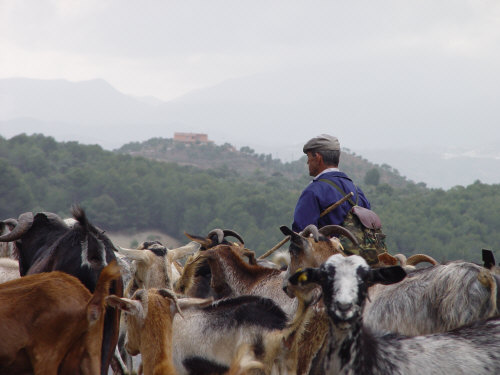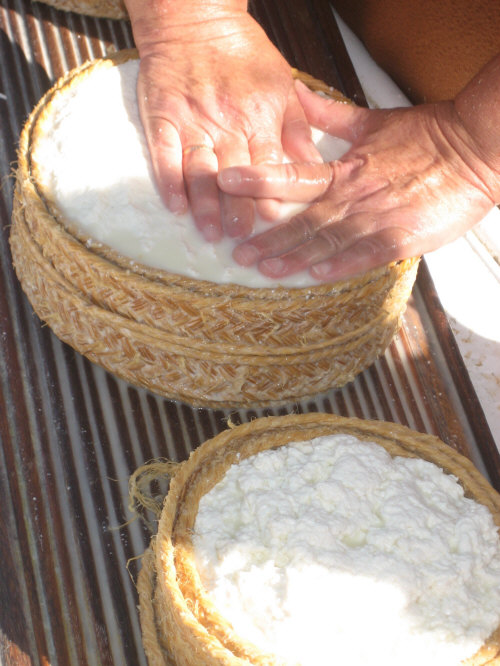|

GOATHERDS
AND SHEPHERDS
Thanks to its special physiographical
conditions (relief, vegetation, climate,
etc.) the Sierra de las Nieves has always
been an area favourable to livestock
breeding, which concentrated almost
exclusively on sheep and goats. For this
reason, goatherds and shepherds are
nowadays, and in former times even more so,
livelihoods that were a way of life for many
of the inhabitants of our district, even
though the work was hard, from sun-up to
sun-down, every day of the year. But the
goatherds and shepherds worked at their
trade with the greatest human dignity that
anyone could wish for.

Next to the regular living quarters of these
professionals in livestock were the
barnyards and stalls in which the animals
were enclosed. Before the modern systems of
wire fencing came into use, the farmyards
were built with masonry walls, sometimes
whitewashed, or with fences. As for the
farmhouses, we could say that the type of
house depended on the financial means of
each owner. The most usual type of house was
a hut built on a base of stone walls,
normally of dry-stone construction, on top
of which a wooden framework was placed
which, in turn, supported a roof of natural
materials made of leaves of palmetto, dry
heather, etc.
In certain cases, the habitual kind of
goatherd or shepherd’s house was a house
built with stone walls set with lime and
sand, rendered and whitewashed. The
whitewash helped to hold the building
together, keep the rooms cool in summer, due
to the colour, and to keep the living areas
more hygienic, due to its disinfectant
properties.

The characteristics of these extremely poor
houses was due to the fact that in many
cases they were located in the middle of the
Sierra and people had to make the most of
the materials found in the surrounding area.
In the Sierra there are also rough-made
shepherd huts, whilst they also used the
many caves which, with a stone wall built at
the entrance, could serve as refuge for both
animals and humans.
Although the life of the goatherd or
shepherd could be considered as being
extremely harsh and ungratifying, it also
provided notable benefits, amongst which
fresh milk daily, which was used to make
cheese, and the meat from the baby goats and
lambs. Not forgetting of course the
privileged knowledge that these
professionals of the countryside had of
their surroundings, from the medicinal
plants to the lanes, animal tracks and
shortcuts that lead from one part of the
Sierra to another, apart from the endless
aspects of verbally transmitted culture that
was passed from father to son and has its
roots in memory and reminiscences.
With his bag on his back, sling in hand and
the help of a dog or two, the shepherds and
goatherds drove the herds down from the
chilly peaks to the valley where the climate
was milder, to spend the winter. This was
short term season migration, as in summer
the herds returned to the highlands of the
mountains to make the most of the fresher
pastures that lasted longer in these areas.
|